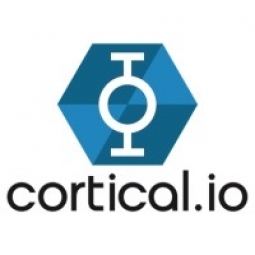Customer Company Size
Large Corporate
Region
- America
Country
- United States
Product
- Cortical.io Contract Intelligence
Tech Stack
- Natural Language Understanding
Implementation Scale
- Enterprise-wide Deployment
Impact Metrics
- Cost Savings
- Productivity Improvements
Technology Category
- Analytics & Modeling - Natural Language Processing (NLP)
Applicable Functions
- Sales & Marketing
Use Cases
- Fraud Detection
Services
- Data Science Services
About The Customer
The customer is a Fortune 500 insurance company. The company is one of the largest insurance providers in the United States, offering a wide range of insurance products to its customers. The company has a large workforce and deals with a high volume of insurance plans each year. The company's goal was to increase the efficiency and quality of its quoting workflow by automating the extraction and classification of key information from prior carrier plans. The company was facing challenges with the manual extraction of information, which was a tedious, error-prone, and expensive process.
The Challenge
The Fortune 500 insurance company was struggling with the manual extraction of key information from prior insurance plans issued by the competition. The process was tedious, error-prone, and expensive due to labor costs. The company had to review tens of thousands of policies per year, each with their own jargon and format. The complexity of the plans, with multiple entries per row and multiple employee classes of coverage, made the task even more challenging. Manual work often overlooked important provisions, leading to inaccurate quote calculations and profit losses for the company. Conventional tools failed to extract accurate information, forcing the company to rely on expensive manual labor.
The Solution
The company implemented Cortical.io Contract Intelligence to automate the extraction and classification of key information from prior carrier plans. The solution was trained on five different products: Long-Term Disability (LTD), Short-Term Disability (STD), Vision, Dental, and Life Insurance. The solution gave full control to Subject Matter Experts (SMEs) over the whole extraction process, allowing them to fine-tune the system without the intervention of any AI expert. The solution was able to accurately extract key information from complex tables with multiple entries per row, detect employee classes and associate extractions to class description, classify clauses, even when the wording differs, detect and OCR scanned documents without manual intervention, and export the document extractions in an Excel format.
Operational Impact
Quantitative Benefit

Case Study missing?
Start adding your own!
Register with your work email and create a new case study profile for your business.
Related Case Studies.

Case Study
Largest Production Deployment of AI and IoT Applications
To increase efficiency, develop new services, and spread a digital culture across the organization, Enel is executing an enterprise-wide digitalization strategy. Central to achieving the Fortune 100 company’s goals is the large-scale deployment of the C3 AI Suite and applications. Enel operates the world’s largest enterprise IoT system with 20 million smart meters across Italy and Spain.

Case Study
KeyBank's Digital Transformation with Confluent's Data in Motion
KeyBank, one of the nation's largest bank-based financial services companies, embarked on a national digital bank initiative following the acquisition of Laurel Road, a digital consumer lending business. The initiative aimed to build a digital bank focused on healthcare professionals looking to refinance student loans and buy homes. A significant challenge was reducing the time to market for new products by democratizing data and decoupling systems across the IT landscape. Like many large enterprises, KeyBank had a variety of vendor applications, custom applications, and other systems that were tightly coupled to one another. New projects often required developing specific point-to-point integrations for exchanging data, which did not address the needs of other downstream systems that could benefit from the same data.
Case Study
BharatPe: Leveraging Google Cloud for Enhanced Data Analytics and AI to Promote Digital Payments
BharatPe, a fintech company founded in 2018, aimed to make digital payments more accessible for over 10 million small offline merchants and kirana store owners in India. However, the company faced challenges in managing the massive amounts of data generated daily from payment processing to business analysis. Prior to using Google Cloud, BharatPe managed its legacy data warehouse with limited capacity to run a large number of queries. The company ran key performance indicator (KPI) reports, without the ability to understand real-time data patterns. Loading three months of data for quarterly reports took more than 30 minutes on the legacy system, and in some cases, queries failed because the system could not scale to support analytical needs. Additionally, BharatPe operates in a multi-cloud environment for disaster recovery and needed a data platform that could run queries against data, regardless of where it resides.
Case Study
Barclays Enhances Customer Experience with IBM BPM Solution
Barclays, a global bank operating in over 50 countries and serving nearly 60 million customers, faced a significant challenge in improving and streamlining the customer experience. The bank's relationships with customers were multifaceted, with customers engaging with the bank through various channels such as mobile, online, and branch locations. The bank had identified 400 different customer journeys, and the challenge was to align these across the enterprise and improve them in a way that positively impacted customers quickly. The director of operations at Barclays, Mike Gamble, recognized the need to transform the bank's processes around customer journeys. He aimed to enhance the understanding of how various functions contribute to delivering customer experiences and then expedite the rollout time of these new processes to achieve the end goal for the customer.
Case Study
Bank BRI: Revolutionizing Financial Inclusion in Asia with Digital Banking
Bank Rakyat Indonesia (Bank BRI), one of the largest banks in Indonesia, was faced with the challenge of increasing financial inclusion among unbanked Indonesians. The bank had an ambitious target of having 84 percent of Indonesians participating in the banking system by 2022. However, the bank's legacy technologies were proving to be a hindrance in achieving this goal. Each of the bank's products had their own public APIs, which were difficult to manage, secure, and monetize. Additionally, the process of onboarding new partners using host-to-host and VPN technology was time-consuming, taking up to six months. The bank also faced the challenge of reaching a largely rural population, with an estimated $8.3 billion in currency being held outside the banking system.
Case Study
Stabilizing an Avalanche of Data: Comcast's Journey with Data360 Analyze
Comcast Corporation, the second largest broadcasting and cable television company in the world by revenue, was facing significant challenges due to the volume and variety of operational and billing data. With over 20 million customers across 40 states, the company needed to establish standardized processes and automate data flows to overcome a wide range of billing, finance, compliance, supply chain, and marketing challenges. In 2009, the company was dealing with massive amounts of data that were causing major revenue assurance challenges. The customer billing review interface required the processing of a billion records every month, within very tight timeframes. The company’s decentralized accounting and finance operations, with 20 different regions and 30 different accounting practices, further compounded these issues.







